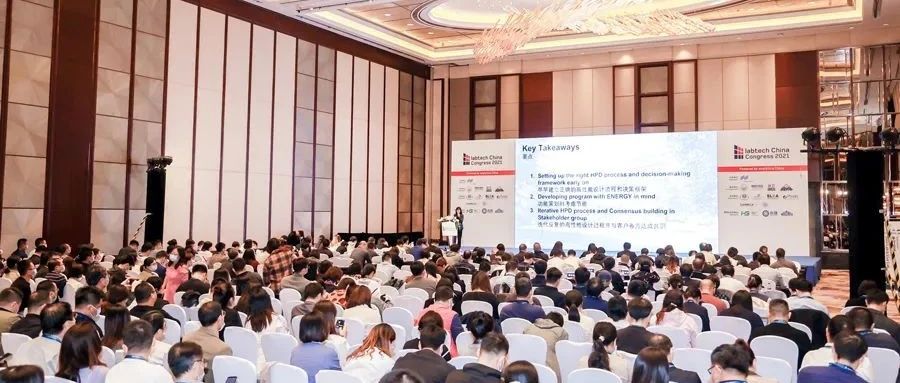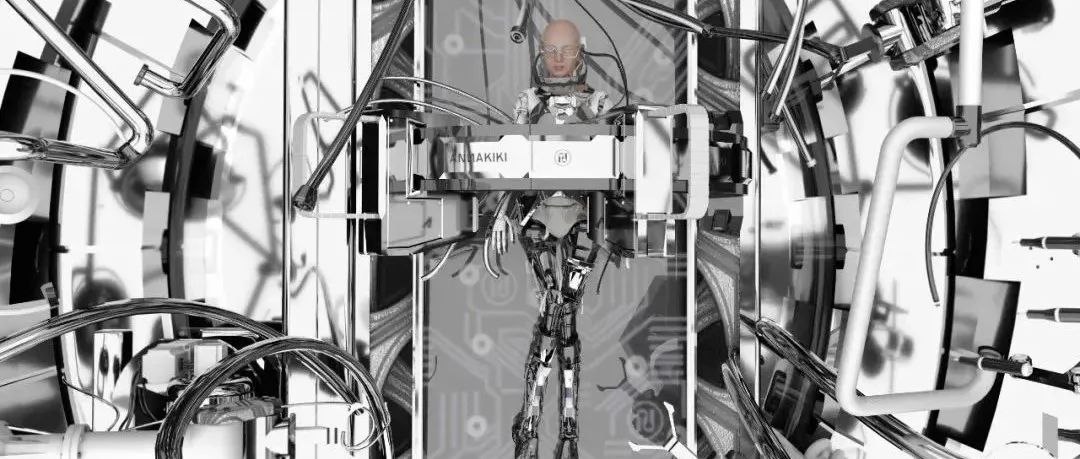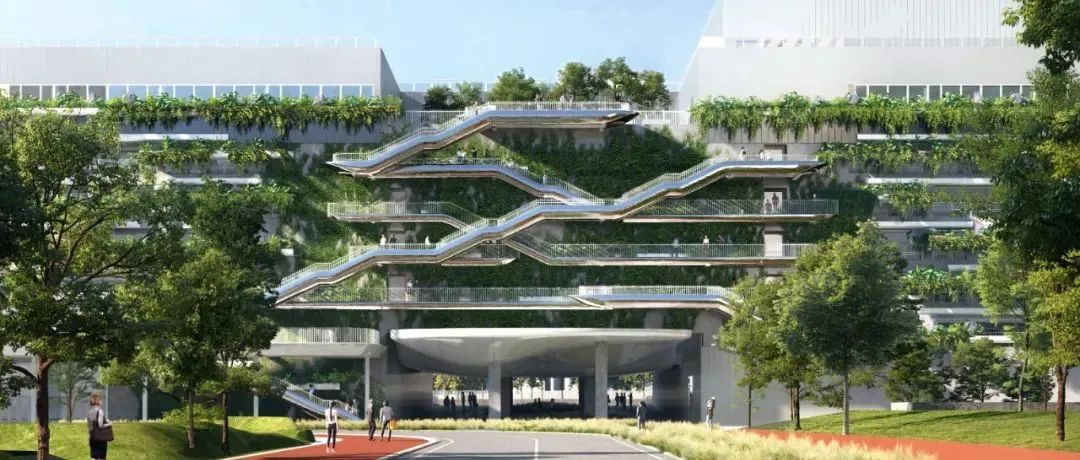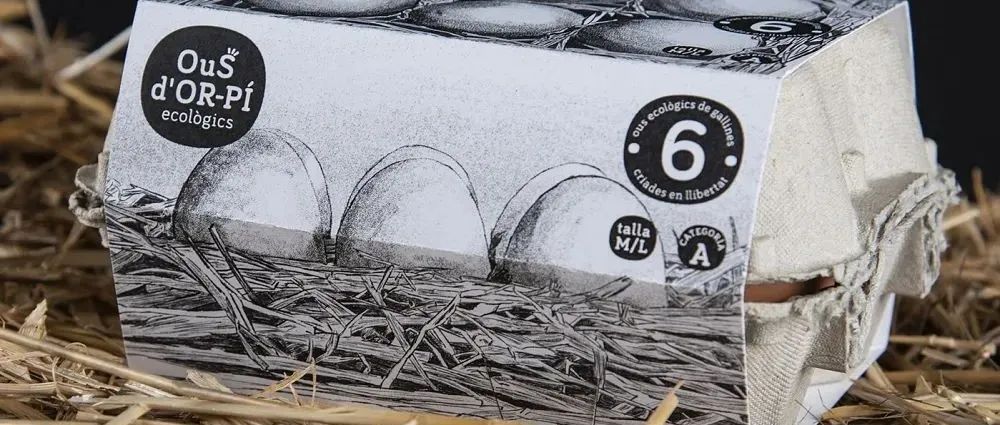HOK副总裁、中国区建筑负责人党辉女士应邀出席了于10月21日开幕的上海实验室规划建设与管理大会暨智慧实验室大会(labtech China Congress 2021)。在会上党辉女士以《埃默里大学健康科学研究大楼二期 - 科研设施的沉浸式整体设计》为主题发表演讲。
本讲演是通过对美国埃默里大学的健康科学研究大楼二期项目的设计案例分析,来讲解HOK如何将可持续发展的高性能设计融入和结合到实验室建筑设计当中的。
埃默里大学健康科学研究大楼二期 -
科研设施的沉浸式整体设计
HOK在埃默里大学健康科学研究大楼二期项目上应用了高性能设计方法来实现建筑单体的节能目标,并计划把此建筑上的可持续设计的相关经验用在后续的其它项目上。这个项目的节能目标:能源强度降低50%,实现能耗强度目标:100kBtu/sf – 年;并且至少实现LEED银级认证。
为了实现这个目标,HOK采用了高性能设计流程,来实现整体化的可持续设计,专注于在功能设置和设计过程中提出对节能问题的解决方案。整个流程分为四个阶段,即构思、分析、归纳分类和贯彻实施阶段。
同时保证这个高性能设计流程顺利实施有两个要点:
-
把整个可持续设计的进度计划和整体设计进度计划对照和结合在一起。确保高效能设计在建筑设计的非常前期就开始,在建筑方案设计阶段结束时高效能设计的分类归纳阶段也必须要结束,这样才能在扩初设计也就是详细设计之前确定主要的指标,以对后面的设计深化尤其是机电设计提供具体要求和标准。
-
所有项目的参与方能够参与所有相关的关键的设计讨论和决策并都能够就这些决策达成共识,这些参与方包含埃默里大学校方,设计团队,各个顾问方和施工管理团队。
第一阶段 - 构思和设置项目基准
HOK在构思阶段上依据下面这6个步骤,并且围绕着减少能源的使用,减少用水和打造利于身心健康的环境来思考问题,通过头脑风暴,提出各种各样的、包括有创意的非常规的节能措施的可能性。
在这个阶段结束之时,通过下表来总结记录了我们的构思内容,包括了提出的64个节能措施策略。
第二阶段 – 分析
这个是我们真正开始深入研究和了解每个策略的影响的步骤,我们研究了能耗强度影响,用水强度影响,节能节水成本,初始成本和回报周期等等,对利弊都进行了分析。通过这个阶段对各种策略进行的深入的研究和分析,研究了各种组合和选择,以来确定必须采用的和不适用的策略,最后从第一阶段的64个策略中确定了23个策略向下深化和发展。所有决策都是以数据为驱动,通过量化的数据来协助客户进行决策。
第三阶段 – 分类归纳
在这个阶段,我们进一步就上一个阶段确定的23个策略进行深入研究,考虑怎样归纳结合在一起,来实现投资回报的最大化。
使用参数化工具识别优化的分类 - HOK借助于参数化工具考虑了960个不考虑用水的措施和接近3000个考虑用水的措施分类组合,通过这些分类组合和筛选,最终确定的方案的整体成果是能够预计实现 – 初期投入成本仅增加400万美元,便可以实现151的能耗强度。其实还有其它额外的一些措施可以协助进一步接近100EUI的目标,但是由于它们的成本投入过大,埃默里大学最后没有考虑采用那些额外的措施。分析中考虑其它绩效因素, 并继续贯彻数据驱动决策的方法。
第四阶段 – 决策&实施
最后的阶段是决策和实施阶段。上面的分类归纳阶段在建筑设计的方案设计阶段就应该结束,其结果会在详细设计阶段和施工图设计阶段来进行实施。
在设计中最终实施的可持续发展措施:
经过这些措施,类似项目一般能耗强度是302,这个项目目前已经降到了156, 减少了一半左右。还有后续的其它的一些措施可以协助实现大约141的能耗强度。下表体现了在项目设计的整个过程中量化的能耗强度的变化过程,从开始的目标到设计阶段,到最后使用者介入之后的最终结果.
总结
整个高性能化设计过程中确保实现目标的重点是:
-
早决策,在建筑设计方案阶段结束之前就确定高性能设计的策略,以便后续和设计紧密结合在一起,实现较高的落地性;
-
功能策划的时候不仅仅要考虑平面布局和面积需求,同时要考虑与节能要求的结合,与节能措施结合高效的紧凑的功能布局也是实现节能目标的重要因素;
-
在设计过程中需要经过反复的研究和论证,并需要逐步并且及时地得到项目决策各方的认可和确认,才能在后面阶段中执行下去。
项目信息
LEED 金级(预期)
地点:美国 亚特兰大
规模:32,515 平方米
服务:建筑设计,工程设计,环境健康设计,室内设计,景观设计,可持续性设计
埃默里大学新的健康科学研究大楼二期(HSRB II)将于2022年启用,届时它将成为致力于研发改善人类健康新方法的一座卓越的生物医学研究大楼。
设计强化了埃默里在伍德拉夫健康科学中心推进协作和转化研究的使命,并将为埃默里提供一座可持续的高性能建筑,成为未来校园项目的典范。
这座八层楼高的建筑包括了供研究人员使用的实验室和协作空间。设有灵活性隔墙的开放型实验室和工作区有助于科研上的快速推进。在这里进行的研究将侧重于成像科学、生物医学工程、心血管医学、儿童健康(包括癌症)、成人癌症、炎症、免疫力和免疫治疗、新生传染疾病和其他跨学科项目。
核心设施包括先进的成像、流式细胞仪、生物库、基因组学及其他科学技术。在整个建筑中贯穿这些核心功能将有助于增进实验师、计算机学者们和核心技术平台之间的互动。
该建筑的一楼专门用于创新区,其中包括一个可用于初创企业和创业研究的加速器空间。这将有助于促进科学发现转化为临床和卫生系统技术。
HOK 的建筑师和工程师合作设计了这个六层楼高的中庭的几个特色元素。其中包括精心设计的人行天桥;一组多层级悬臂楼梯;由屋顶隐藏的桁架支撑的显眼的满堂高立面;以及让室内充满自然光线的大型天窗。
该设计支持了埃默里整个校园内的可持续性努力以及削减能源使用的目标。HOK 的跨学科设计策略将建筑物的碳排放减少了 5-10%,团队的目标是获得 LEED 金级认证。
可持续性设计策略包含了所有使用空间的采光方式;自动窗帘用于减少热量和控制眩光;太阳能电池板阵列;微电网能源管理系统;建筑一侧的绿色屋顶广场面向埃默里的国家级保护公园Lullwater Preserve;地面停车场下的地热井田;地面停车场的透水性铺地;雨水收集系统;和未来污水收集系统的空间。
亲生物的设计元素有助于建筑使用者的健康,同时建立强烈的空间感。中庭中央的天窗让自然光线渗透到室内,加上动态的人工照明,有助于保持人们的昼夜节律。入口处六层楼高的室内绿墙吸引人们使用相邻的楼梯,将人与自然连起来。沿着北立面的阳台面向户外,提供了休憩空间。自然植被的户外景观元素带来了建筑贴近森林的感觉。
室内建筑材料包括了天然石材和木材,其质地让人联想到粗凿的石灰石、板岩和沙质河床地面。以自然为灵感的色调包含石头灰色、温暖的木质色调、冷白色和宁静的蓝色。建筑周围散布着一些区域,这些区域将天然材料与高科技元素相结合,例如鼓励研究人员合作的体验屏幕。
Hui Dang, HOK’s principal and senior project manager, presented “Emory University Health Sciences Research Building II - Immersive Integrated Design for Research Facilities” at the labtech China Congress 2021 in Shanghai.
Emory University Health Sciences Research Building II - Immersive Integrated Design for Research Facilities
HOK explored integrative sustainable design strategies using High Performance Design Process for the HSRB II and helped Emory establish a standard process for future campus projects. Emory set an ambitious EUI goal of 100 kbtu/sf-year. It also mandates a 50% reduction in both energy use intensity (EUI) and water use, and requires to achieve a minimum of LEED Silver certification.
The team built on Emory’s emerging sustainable design process and existing policies to determine strategies that aligned with Emory’s campus-wide sustainability goals. As an overlay to the university’s framework, HOK helped Emory establish an integrated approach to High-Performance Design. They are:
-
Ideation + Benchmarking
-
Analysis
-
Bundles
-
Decision Making + Implementation
Ideation + Benchmarking
Beginning at Ideation + Benchmarking stage, the team integrated its 6-step process to high performance design and worked with Emory to explore innovative ideas, establish project goals and assess benchmarks for similar projects. The team built a matrix of potential design solutions that could address energy, water, transportation, campus ecology, human health and wellness.
At the end of this stage, the team complied a comprehensive list of solutions, including 64 energy saving strategies proposed:
Analysis
The team started to study and analyze the impact of individual strategy in detail at this stage. After compiling a comprehensive list of solutions, the team analyzed each individual item in terms of EUI impact, first cost premiums, energy and water cost savings, and simple rate of return. This required close coordination to conduct energy modeling and cost estimation, identify synergies and evaluate the qualitative and quantitative impacts of each strategy. The goal was to build a robust set of information to guide Emory’s decision making.
Bundles
The strategies were subject to a second tier of analysis to determine how they would work together to meet project goals. Through extensive parametric analysis, multiple attributes were optimized to determine the best possible combination of solutions.
This bundled approach was also used to drive water reduction. The team explored 960 except the water and 3000 different iterations with water elements considered. At the end of this stage, the team came up with a solution that can help achieve the energy saving goal of EUI of 151 kbtu/sf/yr. Other solutions were initially submitted for consideration, but ultimately rejected due to overlap with other strategies or their impact on cost and payback.
Decision Making + Implementation
Application of selected bundle to the design - The team conducted a second round of analysis, bundling strategies together to determine the most cost-effective suite of strategies for selection.
In fact, the International Institute for Sustainable Laboratories (I2SL) Labs21 program states that the average energy use intensity (EUI) for a building of this type is 302 kbtu/sf/yr. Yet the university’s aspirational goals opened the door to many innovative design strategies for the HSRB II, resulting in a conservatively modeled EUI of just 156 kbtu/sf/yr.
The energy model did not account for operational factors which provide additional opportunities for reducing energy demand. This indicates that the HSRB II could achieve an even higher energy reduction when fully operational.
EUI Tracker
Key Takeaways
-
Setting up the right HPD process and decision-making framework early on
-
Developing program with energy in mind
-
Iterative HPD process and Consensus building in Stakeholder group
Project Facts
LEED Gold anticipated
Location: Atlanta, Georgia
Size: 350,000 sq. ft. / 32,515 sq. m.
Services: Architecture, Engineering, Health + Well-Being, Interiors, Landscape Architecture, Sustainable Design
When it opens in 2022, Emory University’s new Health Sciences Research Building II (HSRB II) will be a preeminent biomedical research building facilitating discovery of new ways to improve human health.
The design enhances Emory’s mission of advancing collaborative and translational research across its Woodruff Health Sciences Center. It also provides Emory with a sustainable, high-performance building that can serve as a model for future campus projects.
The eight-story building includes laboratory and collaborative spaces for researchers. Open labs and workspaces with soft barriers facilitate rapid discovery. Research conducted here will focus on imaging sciences, biomedical engineering, cardiovascular medicine, child health including cancer, adult cancer, inflammation, immunity and immunotherapeutics, emerging infections and other interdisciplinary programs. HOK is providing lab planning and programming services.
Core facilities include advanced imaging, flow cytometry, a biorepository, genomics and other technologies. Spreading these core functions throughout the building fosters interaction among experimentalist, computationalist and core technology platforms.
The building’s first floor is dedicated to an innovation zone that includes an accelerator space for startups and entrepreneurial research. This will help promote translation of scientific discoveries into clinical and health system technologies.
HOK’s architects and engineers collaborated on the design of several feature elements in the six-story central atrium. These include sculpted pedestrian bridges, a multi-tiered cantilever stair, a prominent full-height facade supported by a concealed truss at the roof level and a large skylight that fills the interior with natural light.
The design supports Emory’s campus-wide sustainability efforts and aggressive goals for cutting energy use. HOK’s interdisciplinary design strategies reduced the building’s embodied carbon by 5-10 percent, and the team is targeting LEED Gold certification.
Sustainable design strategies include a daylighting approach for all occupied spaces; automated shades for mitigating heat gain and controlling glare; a solar panel array; a microgrid energy management system; a green roof plaza along the side of the building facing Emory’s Lullwater Preserve; a geothermal well field below the surface parking; permeable paving at the surface parking; a rainwater capture system; and space for a future blackwater capture system.
Biophilic design elements support occupant wellness while establishing a strong sense of place. A skylight at the center of the atrium permeates the interior with natural light that, along with the dynamic artificial lighting, aids in maintaining people’s circadian rhythms. A six-story interior green wall at the entrance encourages use of an adjacent stairway and connects people with nature. Balconies along the north facade invite the outdoors inside and provide spaces for respite. Outdoor landscape elements with natural vegetation bring the feeling of the forest close to the building.
Interior building materials include natural stone and wood with textures evocative of rough-hewn limestone and slabs of slate and sandy riverbed floors. The nature-inspired color palette includes stone grays, warm wooden hues, cool whites and serene blues. Scattered around the building are areas that integrate natural materials with high-tech elements such as experience screens that encourage researchers to collaborate.
HOK是一家全球性设计、建筑、工程和规划公司。通过遍布全球的23间办公室网络,HOK以创新而卓越的设计方案创造丰富的人文空间,与客户携手成功.
HOK is a global design, architecture, engineering and planning firm. Through a network of 23 offices worldwide, HOK provides design excellence and innovation to create places that enrich people's lives and help clients succeed.
长按二维码关注我们的微信公众号
Click and hold the QR code to follow HOK
本文来自微信公众号“HOK贺克”(ID:hok_ap)。大作社经授权转载,该文观点仅代表作者本人,大作社平台仅提供信息存储空间服务。












